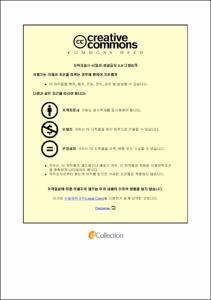Ulsan Univ. Repository
Thesis
General Graduate School
Computer Engineering & Information Technology
2. Theses (Ph.D)
ARTIFICIAL INTELLIGENCE TECHNIQUES FOR ROLLING ELEMENT BEARINGS FAULT DIAGNOSIS
- Abstract
- In modern industries, rolling element bearings are extensively utilized in complex mechanical fields that operate under severe conditions. Consequently, various failures may occur over extended periods of operation. Fault diagnosis employs various methods to ensure safe operation and minimize losses in rolling element bearings, which is especially important. Fault diagnosis encompasses signal acquisition, feature extraction, fault classification, and fault recognition. Fault classification involves categorizing the types of faults that occur in rolling element bearings, artificial intelligence (AI) techniques can detect most intrinsic mechanical information and identify fault features for rolling element bearings. Additionally, to continuously monitor the health conditions of rolling element bearings over time, numerous prognostic approaches are available to analyze diverse features derived from degradation data and assess the health conditions of rolling element bearings. AI techniques are popularly employed to predict the remaining useful life (RUL) of rolling element bearings, thereby facilitating effective prognostics and health management (PHM) of these components. Given the shared data, sequential relationships, and integrated approach characteristics, so, Fault classification and RUL prediction emerge as the primary focuses in the field of fault diagnosis for rolling element bearings, artificial intelligence techniques are proposed for fault diagnosis purposes on rolling element bearings.
Firstly, we propose a novel hybrid deep learning method (NHDLM) for fault classification in rolling element bearings. This method combines Extended Deep Convolutional Neural Networks with Wide First-layer Kernels (EWDCNN) and long short-term memory (LSTM). The EWDCNN method extends the convolution layers of WDCNN, enhancing automatic feature extraction. Subsequently, the LSTM then modifies the geometric architecture of the EWDCNN, resulting in a novel hybrid method (NHDLM), which further enhances the feature classification performance. The proposed NHDLM method demonstrates superior performance in the fault classification for rolling element bearings.
Secondly, to enhance prognostics and health management (PHM) for rolling element bearings, this paper proposes an efficient approach based on adaptive maximum second-order cyclostationarity blind deconvolution (ACYCBD) and a convolutional LSTM autoencoder. This approach aims to achieve feature extraction, health index analysis, and RUL prediction for rolling element bearings. The ACYCBD is utilized to filter noise signals from vibration signals. A novel health index (HI) is designed based on peak value properties to analyze health conditions for the denoised signal. Then, employing convolutional layers and LSTM, the autoencoder transforms into a convolutional LSTM autoencoder (ALSTM) model, which is applied to forecast the trend for rolling element bearings. Compared with SVM, CNN, LSTM, GRU, and DTGRU methods, the proposed approach demonstrates superior performance in predicting the remaining useful life of rolling element bearings.
Finally, to enhance the prediction of RUL for rolling element bearings, a new optimal adaptive maximum second-order cyclostationarity blind deconvolution (OACYCBD) is developed for denoising vibration signals obtained from rolling element bearings. This method builds upon the traditional adaptive maximum second-order cyclostationarity blind deconvolution (ACYCBD) through optimization. To optimize the weights of conventional ACYCBD, the proposed method utilizes a probability density function (PDF) of Monte Carlo to assess fault-related incipient changes with the vibration signal, Cross-entropy is employed as a convergence criterion for denoising. In the subsequent step, a novel health index is calculated using the peak value and the square of the arithmetic mean of the signal. A newly developed hybrid invertible neural network (HINN) combines an invertible neural network and long short-term memory (LSTM) to forecast trends in rolling element bearings. The proposed approach outperforms existing methods in predicting the remaining useful life of rolling element bearings. These advancements pave the way for effective prognostics health management (PHM) through fault classification and RUL prediction for rolling element bearings.
- Issued Date
- 2024
- Awarded Date
- 2024-08
- Type
- Dissertation
- Alternative Author(s)
- Yangde Gao
- Affiliation
- 울산대학교
- Department
- 일반대학원 전기전자컴퓨터공학과
- Advisor
- Jong–Myon Kim
- Degree
- Doctor
- Publisher
- 울산대학교 일반대학원 전기전자컴퓨터공학과
- Language
- kor
- Rights
- 울산대학교 논문은 저작권에 의해 보호받습니다.
- Appears in Collections:
- Computer Engineering & Information Technology > 2. Theses (Ph.D)
- 파일 목록
-
-
Download
 200000807003.pdf
기타 데이터 / 3.63 MB / Adobe PDF
200000807003.pdf
기타 데이터 / 3.63 MB / Adobe PDF
-
Items in Repository are protected by copyright, with all rights reserved, unless otherwise indicated.